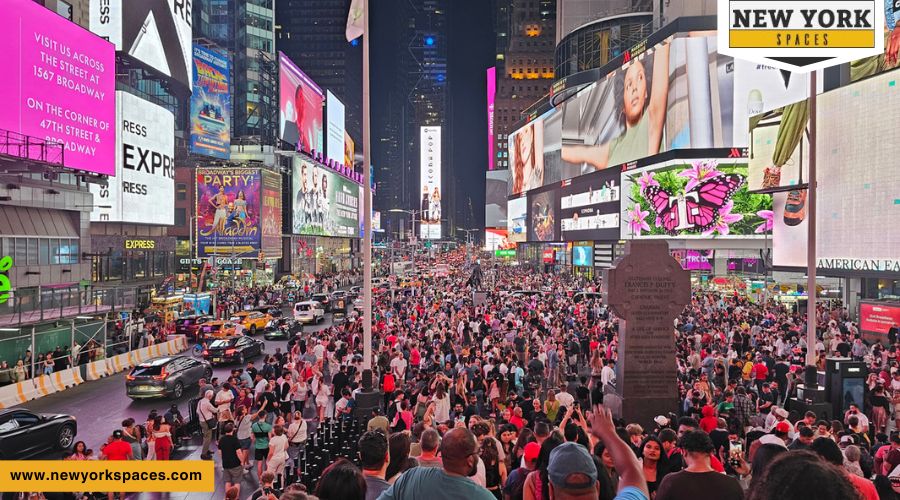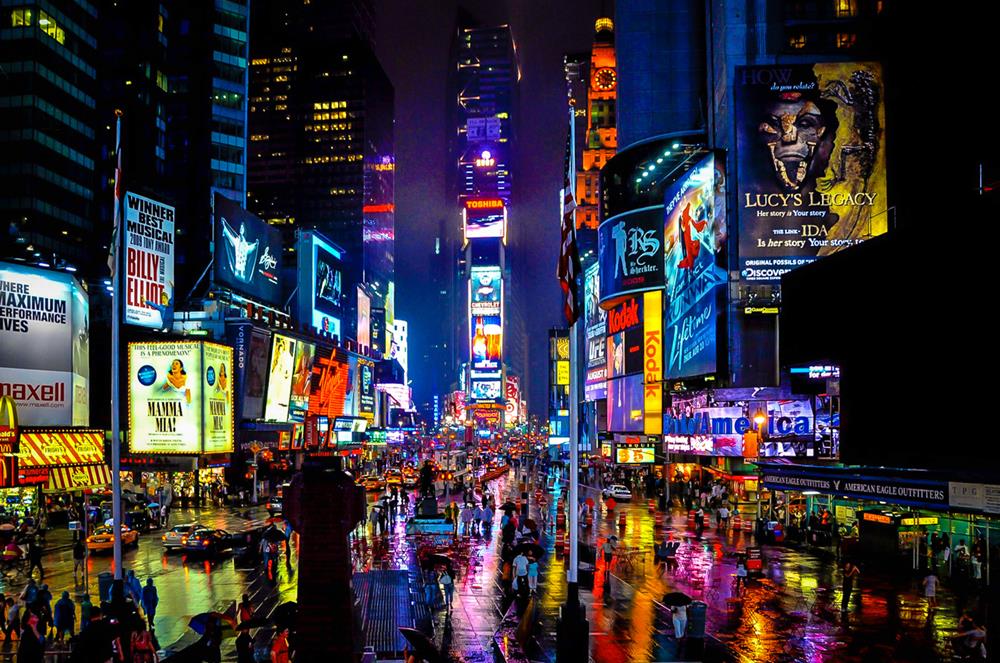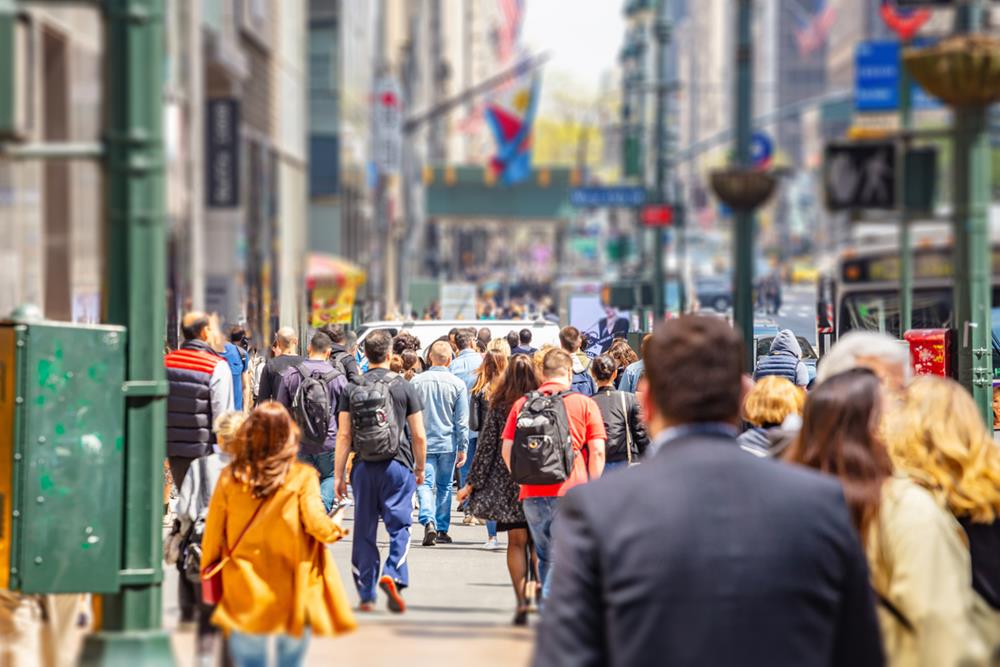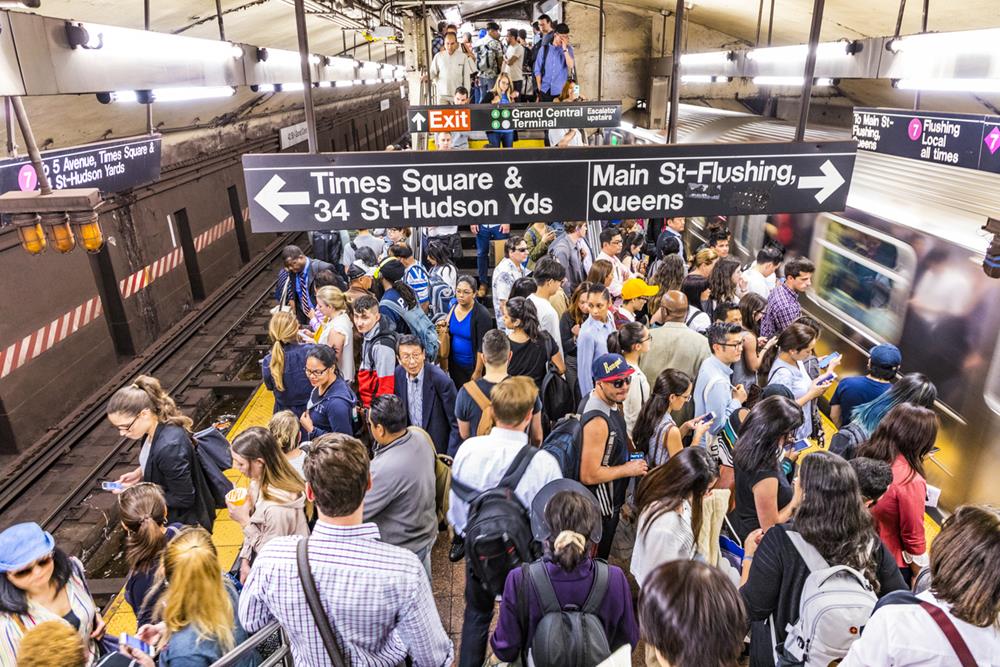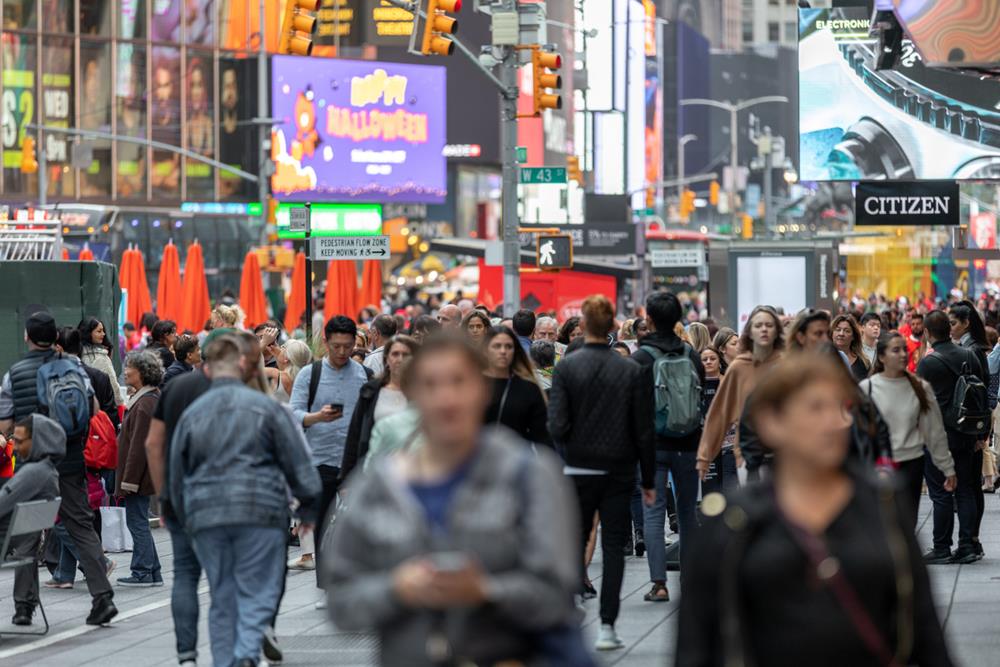In the bustling arteries of modern urban life, the challenge of navigating through crowded spaces and preserving a semblance of personal space has become an everyday reality for many. From packed subway cars to bustling marketplaces and congested city streets, the density of human bodies in confined spaces can be overwhelming. This blog post explores the various strategies people employ to cope with crowdedness and maintain their personal space in such environments.
Psychological Coping Mechanisms
In the pulsating heart of our urban jungles, where the air thrums with the beat of countless footsteps and the murmur of a thousand conversations, the concept of personal space often becomes a luxury. The incessant closeness of bodies, the never-ending brush of shoulders, can fray even the most resilient nerves. Yet, amidst this ceaseless tide of humanity, individuals find solace in the fortresses of their minds, deploying psychological coping mechanisms as their first shield against the onslaught of crowdedness.
The Power of Distraction
Distraction stands as a cornerstone among these mental strategies. It’s not merely about diverting attention but about creating an alternative reality within one’s mind. Many individuals immerse themselves in the world of music, letting melodies and harmonies form a protective bubble around them. The act of plugging in headphones and pressing ‘play’ is akin to casting a spell, one that wards off the external chaos, replacing it with the soothing rhythm of one’s favorite tunes.
The Realm of Stories
Similarly, audiobooks and podcasts serve as portals to other worlds, dimensions where the crush of the crowd ceases to exist. Engaging in a story or a conversation that unfolds in your ears allows you to mentally step out of the crowded space and into a realm where ideas and narratives flow freely. This mental transportation doesn’t just distract; it enriches, turning what could be a stressful commute into an opportunity for learning, entertainment, or simply a moment of escapism.
The Bubble of Mindfulness
Beyond distraction, there’s the practice of mindfulness, a more introspective coping mechanism. It involves a conscious effort to focus on one’s own breathing, the feel of one’s feet on the ground, or the sensations of the air on the skin. By anchoring themselves in the present moment, individuals can create a sense of inner spaciousness, a psychological room to breathe that remains untouched by the external squeeze of bodies.
Visualization and Mental Imagery
Visualization techniques also play a pivotal role. Some people envision a protective shield around them, a bubble of energy that separates them from the rest of the crowd. Others might imagine themselves in a tranquil place – a quiet forest, a deserted beach, or a serene mountaintop. These mental images can provide a profound sense of peace and detachment, offering a mental escape from the physical constraints of the crowded environment.
The Role of Emotional Detachment
Another facet of psychological coping is the practice of emotional detachment. By viewing the crowd as a neutral entity rather than a source of stress, individuals can maintain a sense of calm. It’s about adopting an observer’s perspective, where one is part of the crowd yet distinctly separate, untouched by the collective energy that might otherwise be overwhelming.
Time Management
As city dwellers weave through the tapestry of their daily routines, they are met with the inevitable challenge of crowdedness – be it on the swaying floors of public transport, the bustling aisles of supermarkets, or the echoing halls of fitness centers. Yet, within the relentless march of time, lies the key to reclaiming not just moments of peace, but expanses of personal space that seem all but lost in the urban sprawl.
- Shifting Rhythms: Adapting one’s schedule to sidestep peak hours is a practice as old as time, yet its application in evading crowdedness remains profoundly effective. By choosing to embrace the quietude of dawn, the early riser gains an ally in the stillness of morning streets, finding solace in the sparse crowds and the unhurried pace of the world awakening. The night owl, on the other hand, ventures out as the sun sets, when the day’s frenzy ebbs away, leaving behind a tranquility that pervades empty spaces once teeming with life.
- Strategic Planning: Strategic planning involves more than just adjusting one’s clock; it’s about anticipating the ebb and flow of human tides. Avoiding the rush hour is not merely about leaving fifteen minutes earlier but understanding the rhythms of urban life. It’s recognizing that the 7:45 AM train might be a tempest of commuters, while the 8:15 AM one is a relatively calmer stream. It’s about knowing that grocery stores on Tuesday evenings bear less human fruit than those on Saturday afternoons. This nuanced understanding of time and its patterns allows for an orchestration of one’s day that sidesteps the cacophony of peak times, making every journey a more solitary voyage.
- Leisure in Off-Peak Hours: The strategy extends beyond the utilitarian paths of commutes and chores into the realm of leisure and self-care. Gyms, with their clanking weights and whirring machines, transform into havens of solitude in the early hours or late evenings, offering not just equipment but space. Similarly, parks and recreational areas, often swarmed during the golden hours of weekends, reveal their serene beauty to those who visit in the off-peak light of weekdays, turning a simple walk into a meditative retreat.
The Ripple Effects of Time Management
The benefits of such meticulous time management ripple outward, touching more than just the physical realm. The mental and emotional relief of traversing less crowded spaces is palpable. The stress of navigating through a sea of people, the rush against time, the silent battles for an inch of space – all dissipate when one steps into the calm that off-peak hours offer. This peace extends into productivity and well-being, turning time management into not just a strategy but a lifestyle choice that prioritizes tranquility and personal space.
Spatial Awareness and Body Language
This dance demands more than mere physical agility; it requires a keen sense of spatial awareness and an understanding of the subtle cues of body language. Together, these elements form a silent language, a means of communication that flows beneath the threshold of words, guiding us through the densest of crowds with a semblance of ease and dignity.
The Art of Spatial Awareness
Spatial awareness in crowded environments is akin to possessing an internal radar, constantly scanning the surroundings for openings and obstacles. It involves a heightened sense of one’s own body in relation to others and the environment. This awareness allows for the anticipation of others’ movements, enabling an individual to weave through gaps that appear momentarily in the crowd. It’s not just about seeing the space that exists but predicting the space that will emerge. This predictive capability is honed over time, through experience and observation, transforming crowded passages into a series of strategic moves on a dynamic chessboard.
The Symphony of Movement
Moving through a crowd with minimal contact is an art form that balances assertiveness with fluidity. Each step is deliberate, each movement calculated, yet there is a smoothness to this motion, a harmony that aligns with the rhythm of the surrounding flow. This is not a forceful carving of space but a respectful negotiation, a give-and-take that respects the personal boundaries of others while asserting one’s own path forward.
Body Language
Body language in crowded spaces speaks volumes. A confident posture, with shoulders back and head held high, projects an aura of self-assuredness that can gently persuade others to yield space. Purposeful strides, coupled with a forward gaze, signal intent and direction, often leading others to instinctively make way. This non-verbal communication is not about dominance but about conveying one’s trajectory in a way that others can intuit and respect.
The Subtlety of Eye Contact and Facial Expressions
Eye contact and facial expressions play a subtle yet significant role in this silent dialogue. A brief meeting of eyes can serve as a request for passage, a non-verbal “excuse me” that is often met with a nod or a step aside. A smile or a slight tilt of the head can soften the request, adding a layer of politeness to the silent exchange. These micro-interactions, fleeting yet impactful, weave a fabric of mutual respect and understanding, even among strangers.
The Mutual Dance
Navigating crowded spaces is, at its core, a mutual dance. It requires not only an awareness of one’s own movements but an empathetic consideration for the movements of others. This dance is guided by an unspoken set of rules, a collective understanding that balances individual needs with the fluid dynamics of the crowd. It’s a dance that respects personal space, even when personal space is in short supply, and acknowledges the shared human experience of moving through the world together.
Technological Assistance
The confluence of real-time data, predictive analytics, and user-friendly interfaces in mobile applications offers a beacon of hope, transforming the daunting task of dealing with crowdedness into a manageable, and often seamless, aspect of modern living.
- The Digital Oracle: At the heart of this technological revolution are mobile applications equipped with predictive analytics, capable of forecasting peak times for public transportation with astonishing accuracy. These digital oracles analyze vast datasets, including historical traffic patterns, event schedules, and even weather forecasts, to provide users with a glimpse into the future of urban congestion. Armed with this foresight, commuters can make informed decisions, opting to delay their journey to avoid the crush of peak hours or to rise with the dawn, embracing the quiet of the city’s early hours.
- Real-Time Crowdedness Data: Beyond the predictive, there exists a realm of real-time data that offers a window into the current state of crowdedness at various locations. This immediate insight allows individuals to gauge the density of people in specific areas, be it a subway station, a popular café, or a public park. With a few taps on a screen, one can ascertain if a particular train is packed to the brim or comfortably sparse, if a restaurant has an hour-long wait or a table ready for two. This level of detail empowers people to make split-second decisions, rerouting their day to sidestep the discomfort of overcrowded spaces.
- Alternative Routes and Modes of Transport: Technology also plays a pivotal role in offering alternatives to the well-trodden path. GPS-enabled apps not only suggest the fastest route to a destination but also consider the level of crowdedness along the way. They offer a myriad of alternatives, from scenic bike paths that bypass congested streets to less frequented bus routes that offer a moment of respite during a hectic day. For those looking to avoid public transport altogether, car-sharing and ride-hailing apps provide a personalized escape from the crowd, delivering a door-to-door service that prioritizes comfort and personal space.
- Crowd-Sourced Wisdom: An often-overlooked aspect of technological assistance is the power of crowd-sourced information. User-generated content, such as ratings, reviews, and live updates, enriches the data pool, offering a nuanced view of crowdedness that goes beyond numbers. This communal wisdom can highlight the best times to visit a museum, the quietest coffee shops for work, or the least crowded gym classes, weaving a tapestry of shared experiences that guide others in their quest to avoid the crush.
Emotional Intelligence
In the pulsing heart of crowded environments, where personal space is compressed and the air is thick with the collective breath of humanity, the role of emotional intelligence becomes paramount. This intrinsic ability to perceive, understand, and manage our own emotions, and to recognize and influence the emotions of others, acts as a stabilizing force amid the chaos.
- Recognizing and Regulating Emotions: The first step in applying emotional intelligence in crowded settings is the recognition of one’s own emotional responses. The tight press of bodies, the cacophony of sounds, and the general sensory overload can trigger a spectrum of emotions, from mild annoyance to overwhelming anxiety. By becoming aware of these emotional responses as they arise, individuals can employ strategies to regulate them, such as deep breathing, positive self-talk, or momentarily stepping away to find a quieter space.
- Cultivating Empathy: Beyond self-regulation, emotional intelligence extends to the realm of empathy — the ability to understand and share the feelings of others. In crowded situations, everyone is experiencing a similar challenge of navigating the limited space. Recognizing this shared struggle can foster a sense of communal coping, where individuals are more likely to be patient, offer space where possible, and assist others in distress. This collective empathy not only makes the experience more bearable for each individual but also creates a more supportive and understanding environment.
The Impact of Emotional Intelligence
The impact of harnessing emotional intelligence in crowded spaces is profound. It not only helps in managing personal stress and discomfort but also contributes to a more harmonious collective experience. By regulating our emotional responses and practicing empathy, we can transform potentially overwhelming situations into opportunities for personal growth and communal solidarity.
Personal Rituals and Mindfulness
Personal rituals and mindfulness emerge as beacons of tranquility, offering a refuge for the mind and spirit. These practices are not just acts of self-care; they are essential tools for navigating the physical and emotional congestion of crowded environments.
The Sanctity of Personal Rituals
Personal rituals act as anchors, providing stability and a sense of predictability in the unpredictable sea of urban life. These rituals can be as simple as a series of deep, measured breaths taken before stepping into the morning commute or a particular piece of music played to signal the beginning of the journey home. Even the act of pausing to sip water, feeling its coolness and imagining it washing away the day’s stress, can be a ritualistic moment of reconnection and calm.
These acts, repeated over time, become sacred personal traditions, imbued with a calming power. They serve as psychological signals that help transition the mind from a state of stress to one of serenity, creating a mental oasis amidst the external chaos.
The Mindful Approach
Mindfulness, the practice of being fully present and engaged in the moment, without judgment, offers a profound way to cope with the sensory overload of crowded spaces. It involves a conscious shift in focus — from the external crush of the crowd to the internal landscape of thoughts and sensations. This might mean paying attention to the rhythm of one’s breath, the sensation of feet touching the ground with each step, or the play of light and shadow across one’s field of vision.
Mindfulness encourages a non-reactive stance to one’s environment. Instead of allowing the crowdedness to trigger a cascade of stress responses, mindfulness fosters an acceptance of the moment as it is. This acceptance does not mean resignation but rather an acknowledgment that, in this moment, the situation is as it is. This perspective can dramatically reduce the felt intensity of the crowded environment, making it more bearable.
Integrating Rituals and Mindfulness
Integrating personal rituals with mindfulness practices creates a synergistic effect that enhances one’s ability to cope with crowdedness. A ritual can serve as a cue to enter a mindful state, where each action is performed with intention and awareness. For instance, a deep breathing exercise can become not just a ritual for calming but also an exercise in mindfulness, with each breath drawing the mind back to the present and away from the stressors of the environment.
Seeking Alternatives
The direct approach to navigating the claustrophobic maze of urban living often lies in the simple act of seeking alternatives. This proactive strategy involves a shift in perspective, a willingness to diverge from the well-trodden path, and the creativity to reimagine our routines.
- Venturing Off the Beaten Path: One of the most immediate ways to avoid crowded spaces is by exploring less popular destinations. This could mean visiting a quaint café tucked away in a quiet street instead of queuing at the bustling coffee shop at the heart of the city. It might involve choosing a serene, lesser-known park for a morning jog, where the paths are lined with the quiet whisper of leaves rather than the thunderous tread of the crowd. These choices not only offer respite from the crush of humanity but also enrich our experiences, introducing us to hidden gems and unique spots that might otherwise remain undiscovered.
- The Digital Gateway: In an age where the digital and physical worlds intertwine, the internet presents itself as a powerful ally in the quest for solitude. Online shopping has transformed the retail experience, allowing us to browse, compare, and purchase from the tranquility of our homes, bypassing the frenzied environment of crowded malls and stores. Similarly, online bookings for restaurants, cinemas, and events enable us to secure our spot without braving long lines, turning what was once a stressful ordeal into a few clicks of convenience.
- Rethinking the Commute: The daily commute often epitomizes the challenge of navigating crowded spaces. Seeking alternative routes or modes of transport can dramatically alter this experience. This might mean taking a slightly longer but less congested path, or embracing alternative modes of transport like cycling or walking, which offer the dual benefits of exercise and avoidance of crowded public transport. For those bound by the timetables of trains and buses, even the choice of a different carriage or adjusting the commuting time by mere minutes can make a significant difference in the level of crowdedness encountered.
- The Benefits of Flexibility: The essence of seeking alternatives lies in flexibility—the ability to adapt and adjust according to the situation. This approach does not just minimize the stress and discomfort of crowded environments; it also opens up a spectrum of experiences and choices that might have remained obscured by the habitual paths we tread. By embracing flexibility, we not only evade the physical constraints of crowded spaces but also unlock a more personalized and enjoyable way of navigating our world.
Conclusion
Dealing with crowdedness and the lack of personal space requires a multifaceted approach, blending psychological resilience, strategic planning, and sometimes, technological aid. The key lies in understanding one’s own limits and preferences and finding the right mix of strategies that work on an individual level. As our urban centers continue to grow and evolve, so too must our methods for navigating and finding comfort within them. Through adaptability, awareness, and a bit of ingenuity, we can reclaim our sense of personal space, even in the most crowded of places.

